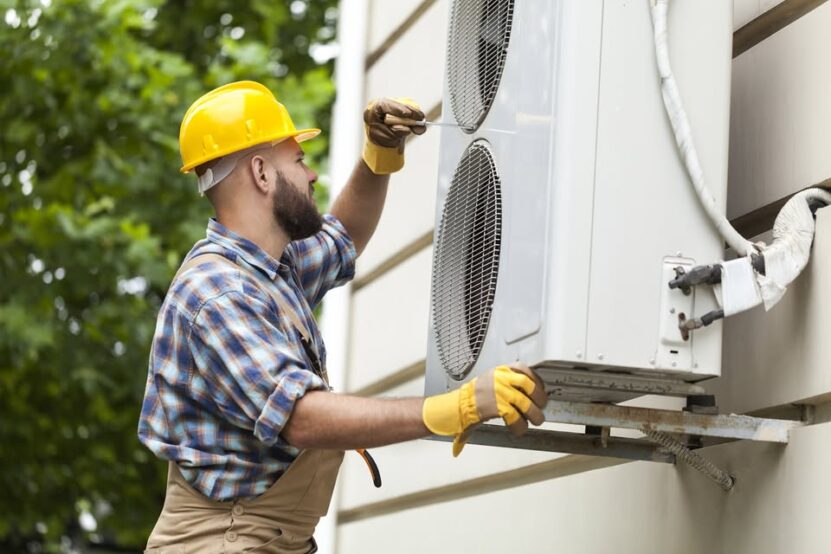Smart capital doesn’t chase trends. It follows patterns, data, and durable returns. The market right now offers windows for buyers who act decisively, understand industry cycles, and spot overlooked assets. Most large acquisitions grab headlines, but small to mid-sized operations offer better ROI, faster paths to cash flow, and more flexibility.
In 2025, five sectors lead the list for strategic acquisitions. They combine recession resilience, low overhead, strong demand, and realistic valuation multiples.
Key Points
- HVAC and plumbing remain top-tier for operational control and recurring cash flow.
- E-commerce brands with organic traffic offer efficient scale.
- Senior care franchises dominate due to demographic momentum.
- Auto repair shops show undervalued potential in regional markets.
- Niche manufacturing firms hold solid EBITDA margins with fewer competitors.
1. HVAC Companies – Recurring Cash, Recession Proof

HVAC firms continue to deliver consistent income across economic cycles. Units fail during cold snaps or heat waves. Customers don’t delay repairs. That urgency creates stable revenue and pricing power. In 2025, many HVAC operators near retirement without clear succession. That opens the door for structured acquisitions.
Buyers should prioritize service-based revenue over new installations. Service contracts lock in monthly billing and higher lifetime value per customer. A well-run HVAC business maintains 20%+ margins. Labor still presents a challenge, but software adoption and route planning improve technician efficiency.
States like North Carolina, Arizona, and Idaho show above-average HVAC demand due to population growth. SBA lenders favor this category due to predictable asset value and transfer potential. Metro zones with large rental populations add even more upside.
Avoid firms that rely on one technician or one builder for all jobs. That creates risk. Target those with dispatch software, clean books, and strong customer retention.
2. Plumbing Operations – Low Overhead, High Need

Plumbing demand never fades. Pipes leak. Drains clog. Toilets back up. The value sits in urgency and recurring repair cycles. That keeps revenue strong year-round.
High-performing plumbing firms keep overhead low. Most run lean with under 20 employees. Many operate without formal sales systems or retention plans. That’s where opportunity lives. Smart buyers install CRM platforms, introduce local SEO strategies, and lock in referral networks. These small moves double service volume fast.
Markets with aging infrastructure like Des Moines or Greenville create even more demand. Many plumbers rely on decades of local relationships, not systems. That creates fragility. New owners with process discipline turn those firms into repeatable machines.
It’s critical to avoid new-construction focused plumbing companies. They carry inconsistent margins, weak systems, and risky project timelines. Operators must look at gross profit trends, labor usage, and valuation impact based on service breakdowns. For a detailed breakdown on how to appraise a plumbing business and reallocate resources to drive value, see this resource https://acquira.com/best-businesses-to-buy/.
3. E-commerce Brands With Organic Moats

Not every e-commerce store deserves attention. Most rely too heavily on paid ads and Amazon traffic. That creates a fragile revenue model. Buyers in 2025 should instead search for brands with audience control.
Those brands often live in categories like supplements, personal care, or hobby gear. The real asset isn’t the product—it’s the audience.
Strong acquisition targets often show:
- 50% or more of traffic from unpaid sources
- Email lists with over 10,000 engaged contacts
- Reorder rates above 20% within 90 days
Sellers who built brands between 2017 and 2021 now seek exits. Valuations sit between 2x and 3x SDE. That’s a drop from peak, but still fair when email engagement and margin remain high. Buyers should audit fulfillment systems, customer service logs, and refund trends before making offers.
Avoid stores dependent on TikTok or influencer spikes. Focus on ones with evergreen content and customer loyalty. Those properties create smooth onboarding and early returns.
4. Senior Care Service Franchises – Predictable Growth

America’s age curve doesn’t lie. By 2030, over 80 million people in the U.S. will be 65 or older. That fact drives every forecast in the senior care sector. In 2025, smart buyers target service franchises that operate in high-income zip codes.
These franchises avoid medical licensing. They deliver non-medical support like housekeeping, meal prep, and companionship. Margins stay healthy, often in the 30% range. Buyers should study the client base, hourly bill rate, and staff turnover before acquiring. Most seller-owned locations price themselves too low.
Top markets include:
- Austin, TX
- Sarasota, FL
- Ann Arbor, MI
Owners often burnout from scheduling chaos. That gives new operators with basic systems a quick path to growth. Territory rights offer long-term expansion. Franchisors also assist with recruitment and compliance.
Buyers must analyze hourly labor costs, local agency competition, and caregiver retention incentives. Those factors shape cash flow fast.
5. Auto Repair Shops – Prime Valuations, Steady Demand

Average vehicle age in the U.S. now exceeds 12 years. That single stat drives consistent demand for general repair shops. EV growth hasn’t dented this category yet. Most U.S. drivers still own gas vehicles that need brakes, tires, and fluid services.
Independent shops with solid reputations often suffer from poor branding. They operate with loyal techs, but outdated systems. That gives buyers room to upgrade and scale. Revenues often sit near $800k, but most of those firms lack digital booking, CRM, or local ad strategy.
Evaluate targets using these five points:
- Repeat customer ratio
- Parts and labor markup history
- EPA compliance records
- Bay capacity and throughput
- Staff tenure and training practices
Markets near suburban highways or dense commuter zones work best. Avoid luxury-only garages. Mainstream vehicles offer faster turnarounds and higher ticket volume.
Most deals close between 1.5x and 2.8x SDE. With proper financing, buyers break even in under 24 months. That’s faster than most brick-and-mortar categories today.
Conclusion: Buy with Clarity, Scale with Systems
Smart investors don’t chase trends—they lock in cash flow. The five categories above offer high-margin service, limited disruption risk, and clear value triggers. Each one gives buyers a direct path to profitability without reliance on hype or fragile models.
Operators who win in 2025 will control systems, hire with discipline, and optimize underpriced assets. Buying the right operation isn’t about luck. It’s about choosing the sector with the strongest tailwinds and the cleanest books.
Plumbing, HVAC, auto repair, senior care, and e-commerce all check those boxes—when sourced and scaled correctly. Now is the time to act. Market cycles favor those who step in before private equity floods the table.
Related Posts:
- Finance Lease vs Operating Lease - Which One Is…
- Revenue Growth Hacks for Small Businesses ─ Quick…
- Top 10 Celebrity Net Worths in 2025 ─ Who's Leading…
- Best Toothpaste for Dry Mouth 2025 - Top Picks for…
- Website Development Costs for 2025 – What’s Changed…
- Best Option Trading Books to Help You Master the…









